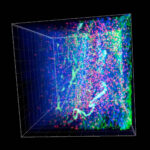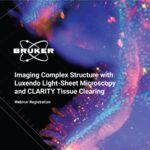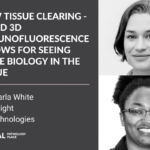Pathways to clinical CLARITY: volumetric analysis of irregular, soft, and heterogeneous tissues in development and disease
Posted on Jul 19, 2017
Abstract
Three-dimensional tissue-structural relationships are not well captured by typical thin-section histology, posing challenges for the study of tissue physiology and pathology. Moreover, while recent progress has been made with intact methods for clearing, labeling, and imaging whole organs such as the mature brain, these approaches are generally unsuitable for soft, irregular, and heterogeneous tissues that account for the vast majority of clinical samples and biopsies. Here we develop a biphasic hydrogel methodology, which along with automated analysis, provides for high-throughput quantitative volumetric interrogation of spatially-irregular and friable tissue structures. We validate and apply this approach in the examination of a variety of developing and diseased tissues, with specific focus on the dynamics of normal and pathological pancreatic innervation and development, including in clinical samples. Quantitative advantages of the intact-tissue approach were demonstrated compared to conventional thin-section histology, pointing to broad applications in both research and clinical settings.
By Brian Hsueh, Vanessa M. Burns, Philip Pauerstein, Katherine Holzem, Li Ye, Kristin
Engberg, Ai-Chi Wang, Xueying Gu, Harini Chakravarthy, H. Efsun Arda, Gregory
Charville, Hannes Voge, Igor R. Efimov, Seung Kim & Karl Deisseroth
Scientific Reports | 7: 5899 | DOI:10.1038/s41598-017-05614-4










